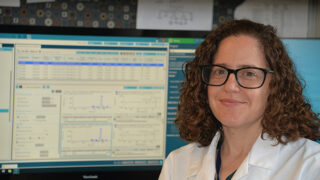Young-Hwa Goo, PhD
Areas of Study
Molecular mechanism of metabolic diseases
Education
- Baylor College of Medicine, Houston, TX2009Postdoctoral training
- Pohang University of Science and Technology, South Korea2004PhD
Research
My lab is interested in finding the intertwined mechanism of lipid metabolism and inflammation, two major driving forces of atherogenesis. To achieve this goal, we have started studies on the mechanism of macrophage foam cell formation, the most abundant leukocytes in the atheroma. Using proteomics on isolated the fraction of lipid droplets (LD) in foam cells followed by a large-scale immunoprecipitation, we have delineated the networking of LD-associated proteins and identified new players that we further characterized and named. For unbiased functional analyses, we also use lipidomics and transcriptomics to draw interactive maps that may be regulated by LD-associated proteins. Based on these findings, we have generated knock-out, transgenic, and CRISPR-Cas9 edited knock-in mice to study the impacts of LD-associated proteins on atherosclerosis development and other metabolic diseases. Ultimately, to translate our findings to clinical application, we will discover small molecules involved in lipid metabolism and inflammation of macrophage foam cells. Therefore, we hope our study contributes to understanding the mechanism of lipid and inflammation induced metabolic diseases, the identification of therapeutic targets, and the discovery of small compounds to intervene in cardiovascular and other metabolic diseases.
Publications
View Young-Hwa Goo's articles on the National Institute of Health's PubMed website.
